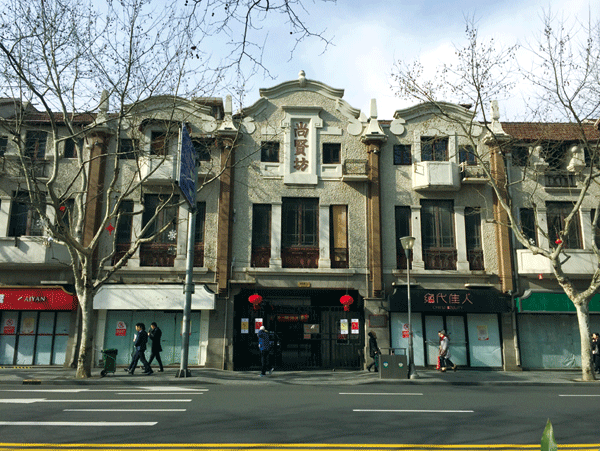A bid to save shikumens from extinction
Updated: 2016-02-20 01:09
By Zhou Wenting in Shanghai(China Daily USA)
|
||||||||
 |
|
Shang Xian Fang on Huaihai Road Middle, built in 1924, is a typical shikumen building. GAO ERQIANG / CHINA DAILY |
Several of Shanghai's political advisors are pushing for the city's iconic shikumens, red-roofed terrace houses, to be included in UNESCO's World Heritage List alongside other Chinese cultural sites such as the Longmen Grottoes, Mount Wutai and the legendary Temple of Heaven in Beijing.
Once considered to be the most common form of housing for Shanghai residents, many of these buildings will likely be demolished in the near future as part of reconstruction efforts in old communities, as stipulated in the city's 13th Five-Year Plan (2016-20).
"This seems to be the only way to rescue these historic buildings that were built around the 1930s. If the shikumens don't make the list, we'll face massive, irredeemable losses," said Feng Xiaomin, director of the cultural and historical data committee of the city's political advisory body. The committee had submitted a proposal of recommendations during the annual gathering of local legislators and political advisers in January.
"The shikumen is a unique architectural style that makes the city stand out from other places. We recommend that these houses be listed as a world cultural heritage candidate to preserve their precious form and cultural embodiment," he added.
There were more than 9,000 shikumen complexes in Shanghai in 1949 and about three in four local residents lived in such homes which also served as spaces for factories, banks, newspaper offices and schools, according to municipal records. However, more than 70 percent of these complexes were demolished in the past three decades and people have either been relocated to new high-rise neighborhoods or paid compensation.
According to the committee, there are just 173 such complexes left in the city today. Only a few of them have been assigned with a city-level historical building status while most remain outside the scope of protective regulations and policies.
"Although the city's authorities have invested manpower and money in the protection and utilization of shikumen houses these past few years, the priority is nevertheless still on land development," Feng said.
The most famous example of how shikumens can be repurposed and modernized is seen in the Xintiandi project which has transformed old homes in the area into fashion, retail and dining outlets.
Wu Jiang, a senior urban planner and vice-president of Shanghai Tongji University, suggested integrating rejuvenated shikumens into the city's new urban planning landscapes.
"We don't necessarily need to abandon the old neighborhoods while building new ones. The best way to preserve shikumens is probably to repair these old residences and make them an enviable dwelling option," Wu said.
zhouwenting@chinadaily.com.cn
- Missing children found safe in nearby village
- Rich Chinese splurge on sportswear as luxury's lustre dims
- Urgent remedy sought for pediatrician shortage
- China starts safety check for school buses as new semester draws near
- Ticket scalpers face crackdown at Beijing hospitals
- Judicial DNA test in hot demand after policy change
- Classic Car Show kicks off in London
- Balkan, Austria police agree to register refugees on Macedonian border
- Turkey blames Kurdish militants for Ankara bomb; vows reprisals
- Britain scrambles fighters to intercept Russian bombers
- Chinese community to protest against Peter Liang's verdict
- Car bomb attack on military in Turkish capital kills 28

 Chinese photographers' work shines in major photo contest
Chinese photographers' work shines in major photo contest
 88th Academy Awards Governors Ball Press Preview
88th Academy Awards Governors Ball Press Preview
 Egg carving master challenges Guinness World Record
Egg carving master challenges Guinness World Record
 Missing children found safe in nearby village
Missing children found safe in nearby village
 Madonna's world tour lands in Hong Kong
Madonna's world tour lands in Hong Kong
 Producing high-speed rail tracks
Producing high-speed rail tracks 
 Surreal world created by Canadian photographer
Surreal world created by Canadian photographer
 Lanterns light up the night across China
Lanterns light up the night across China
Most Viewed
Editor's Picks

|

|

|

|

|

|
Today's Top News
Investigation for Nicolas's campaign
Will US-ASEAN meeting be good for region?
Accentuate the positive in Sino-US relations
Dangerous games on peninsula will have no winner
National Art Museum showing 400 puppets in new exhibition
Finest Chinese porcelains expected to fetch over $28 million
Monkey portraits by Chinese ink painting masters
Beijing's movie fans in for new experience
US Weekly

|

|







